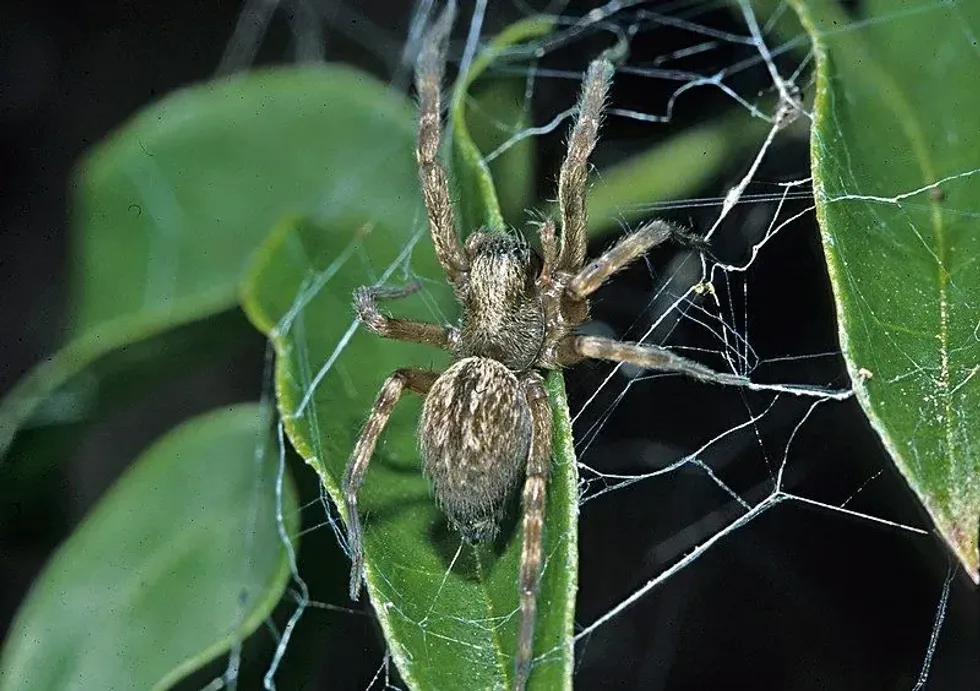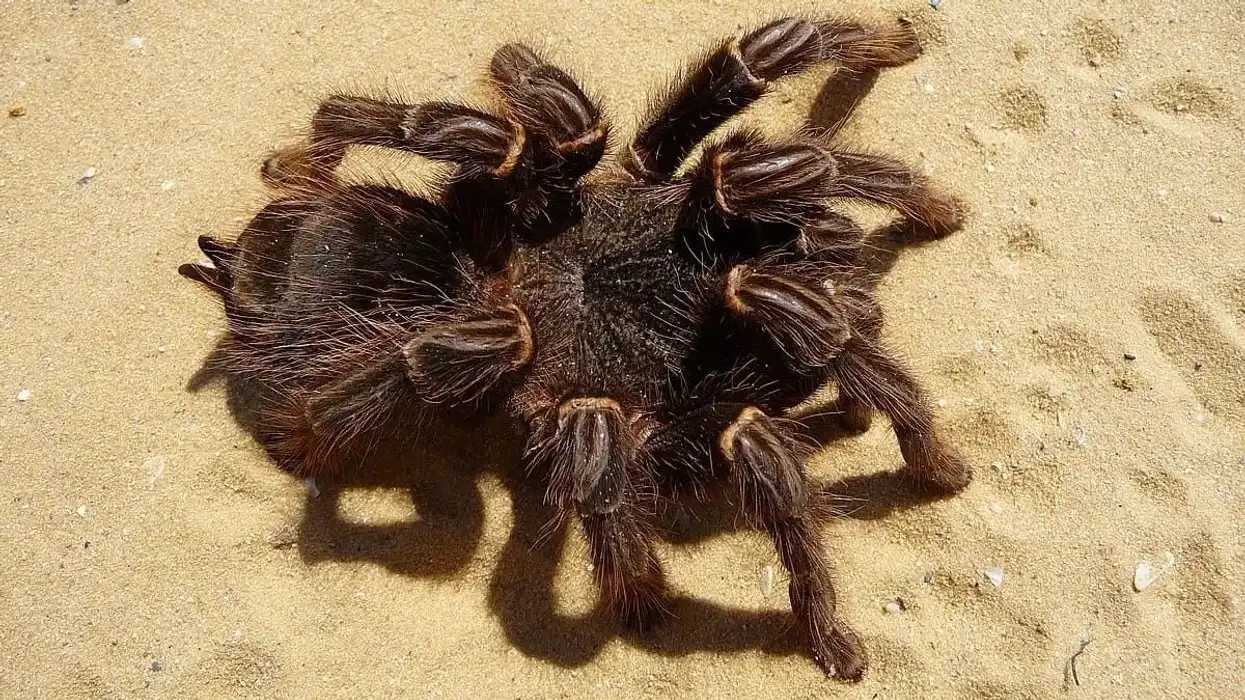Your house is the natural habitat of spiders such as the yellow sac spider, the hobo spider, jumping spiders, the American house spider or the common house spider, and wolf spiders. There are more than 3,400 species of spiders in North America.
They reside in all the strange nooks and corners of your house and fill those areas with their web houses. The spiders are our indirect saviors, contrary to popular opinions of them being a creepy insect. They actually ward off harmful insects which might contaminate our food.
Spiders have been existing on this planet even before humans. They have been mutually existing with humans and completely evicting them from our houses is a herculean task.
Spiders pose very little danger to humans, their bites are also harmless. Grey house spiders of the Desidae family are native to eastern Australia.
They have soft gray hair over the abdomen which seem like white markings on the body, purplish-brown legs, and four pairs of eyes which add to their features and easy identification. Other characteristic features include their ladder-like untidy web, weaved with the help of their legs.
These spiders feed on insects that get trapped inside their webs.
Their venom is not lethal, unlike that of wolf spiders, but it causes a slight swelling in the local area and might result in nausea. Other common house spiders include the brown recluse spider, the black widow, the black house spider, wolf spiders, and the yellow sac spider.
For more relatable content, check out these green lynx spider facts and crab spider facts for kids.
Grey House Spider Interesting Facts
What type of animal is a grey house spider?
A grey house spider is a kind of spider that makes its webs in hiding places like cracks or tiny openings. The primary colors found in these spiders include gray, black, brown, or dark brown.
It is a member of the family Desidae. There are several other species of spiders included in this family like the black house spider (Badumna insignis) and the brown house spider (Badumna longinqua). Black house spiders hold a lot in common with the Badumna longinqua.
What class of animal does a grey house spider belong to?
This spider belongs to the class of Arachnida, which the black house spider also belongs to.
How many grey house spiders are there in the world?
The exact number of grey house spiders is not yet recorded. These are one of the most common groups of spiders with so many diverse species like the wolf spider and the black widow spider. All common house spiders have similar characteristics which makes their identification perplexing, hence, this uncountable population has not yet been recorded.
Where does a grey house spider live?
A grey house spider lives in wetlands and grasslands around eastern Australia and New Zealand, Japan, and Mexico. This is different to the American house spider which has a cosmopolitan distribution. This spider is also found in residential places. It forms its web in dark, wall crevices and prefers living in isolated places.
What is a grey house spider's habitat?
The habitat of these house spiders typically includes wetlands and forests. With the help of its long legs, it weaves its ladderlike web in dark-looking cracks and funnels on leaves, rocks, walls, and tree trunks.
They are also found in our homes where they form webs in reclusive spaces to trap insects.
One of the notable features is that they sit back and wait for their prey. Once the insect falls into the trap, they hold it with their legs and inject their venom to paralyze its body and finally eat it.
Who do grey house spiders live with?
These spiders live a solitary life. They prey and build their webs individually. These spiders are not even sociable to their offspring. They live in isolation but they know how to live among human settlements too. These spiders do not bite but they prey infectiously, once the insect falls into the web.
How long does a grey house spider live?
The lifespan of a grey house spider is approximately one to two years.
How do they reproduce?
The male spider leaves its web and looks for the webs of female spiders. The female house spider builds the web with several egg sacs and stays within the web unless required to leave.
The male spider finds the female when it is time to mate. The female spider is polyandrous and it might mate with one or several other spiders during its lifetime. Once the male approaches the female, both of them might stay together and mate frequently for several days.
The female stays in the web until the eggs hatch. When hatched, each small grey house spider starts preying on the insects which get trapped in the web disowned by their mother.
What is their conservation status?
Their conservation status is Not Evaluated in the IUCN Red List of Threatened Species as they are currently abundant in the ecosystem. The breeding occurs frequently, hence their numbers keep multiplying.
Grey House Spider Fun Facts
What do grey house spiders look like?
The grey house spider, as the name suggests, has a gray cephalothorax and abdomen with soft hair all over the skeleton which seem like spot-like markings over their body. Their legs have a purple-brown color and the hair on their legs is striped.
They also have an abdomen with dorsal markings. The female species are slightly larger than the males. Other features include four pairs of bulging eyes.
The front and middle pairs are larger than the ones present at the ends. Their common look-alike species include the American house spider, black house spider, and black widow spider.
How cute are they?
These spiders are in no way cute. They are fuzzy and hairy with large big brown edged shiny eyes, dark brown purplish legs, and a grayish abdomen. They appear gross and creepy to many. However, their bites are harmless and their webs are mostly in hidden spaces, so they can be tolerable.
How do they communicate?
There are no studies yet produced which might suggest methods through which grey house spiders communicate. Generally, spiders use seismic communications to carry out communication. These vibrations are useful during courting, warning their rivals and mimicking their prey to catch it.
The male is also found to release a scent to attract their potential mate. Some spiders also use scents and smells. Female spiders wave their forelegs in the air to indicate their sexual availability.
How big is a grey house spider?
They are about 0.4-0.6 in (1-1.4 cm) in length and the male black spider is comparatively smaller than the females. The males attain a maximum length of 0.4 in (1 cm). This species is smaller than the wolf spiders of North America but bigger than the American house spider or common house spiders.
How fast can grey house spiders move?
There is not enough information available about their speed. Spiders, in general, can move quite fast. The fastest spider is the giant house spider which can cover a distance at 1.2 mph (2 kph) speed. There is also a family of jumping spiders that move rather slowly but can jump with ferocious agility from their webs while capturing prey.
How much does a grey house spider weigh?
The weight of spiders is proportional to their size. These spiders weigh around 0.02 oz (0.6 g) to a maximum of 0.04 oz (1 g). Their exact weight, however, is unknown.
What are the male and female names of the species?
There are no distinct names for grey house spiders based on their sex. They share a common name.
What would you call a baby grey house spider?
Grey house spider babies are called spiderlings or hatchlings.
What do they eat?
This is an insectivore spider species whose dietary regime includes eating ants, bees, grasshoppers, beetles, jumping plant lice, flies, and any insects that fall into their webs.
Are they poisonous?
This spider, Badumna longinqua, is a venomous spider. Their bite contains venom but not enough to kill a human. There are very rare records of spiders killing a human. They are slightly venomous due to their predatory nature. This spider bite can cause vomiting, nausea, or minor swelling. If the bites are numerous, medical treatment is advisable.
Would they make a good pet?
Red and grey house spiders are most naturally found in our homes. A grey house spider can be a good pet as it is not very aggressive unless startled or touched.
It is good for beginners who are planning to keep insects as pets, as they do not need to be looked after thoroughly. They can be kept in a glass jar with a lid.
This species of spiders usually live in solitude, so housing more than one spider in a jar might result in cannibalistic instincts. Their food can be easily bought from pet shops or online.
You just have to provide them with food and water. Try not to touch them as they might bite if anything strange comes their way.
Did you know...
Spiders often generate a fear in humans called arachnophobia which is often the cause of their eviction from our houses. However, spiders have been living indoors with humans since the Roman Empire.
They can protect the house by helping suppress a range of insects and can save humans from using insecticides. They often drop their already consumed prey from the web which can be evidence of their keeping the house clean from other insects.
The spider builds ladder-like webs so it is placed into the group of ladder web spiders.
This spider is preyed on by cellar spiders, parasitic wasps, short-tailed birds, and flies.
The female spider can remain in her web for her entire life.
Are grey house spider bites dangerous?
They are venomous but the grey house spider bite is not harmful. The bites initially give a painless sting but after few hours, they can be painful and slight swelling around the bitten area might appear.
What are grey house spiders attracted to?
The common species, Badumna, is often attracted to trees that have been broken down by wood-eating insects like termites and cockroaches. The sap that overflows from such trees is a favorable spot for the butterflies, bees, and ants, hence making it an attractive spot for spiders as they might have enough prey to feast on.
Here at Kidadl, we have carefully created lots of interesting family-friendly animal facts for everyone to discover! Learn more about some other arthropods from our whip spider facts and southern house spider facts pages.
You can even occupy yourself at home by coloring in one of our free printable grey house spider coloring pages.









